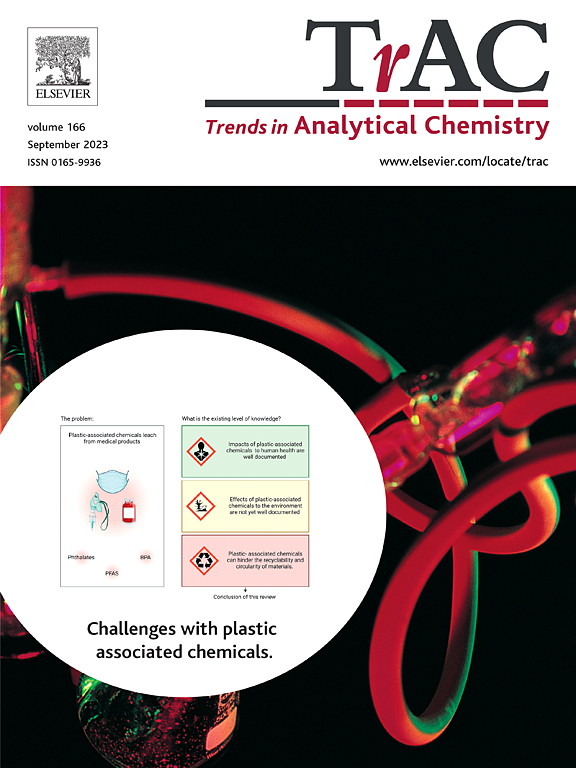Spinel nanomaterials and their composites as extractors and sensors for heavy metals and other pollutants
IF 11.8
1区 化学
Q1 CHEMISTRY, ANALYTICAL
引用次数: 0
Abstract
This extensive review deeply examined the current advancements in spinel metal oxides (SMOs) and their composites. The research studies the use of SMOs and their composites as multifunctional nanomaterials for the extraction and detection of heavy metals and other contaminants. Researchers have utilized SMOs, with their special crystal structure and unique physicochemical properties, as promising materials for sample preparation and detection applications. This study explores their synthesis, properties, sensing, adsorption, and practical applications, emphasizing their role as efficient adsorbents and sensors for heavy metals, pesticides, phenols, and organic dyes. We present a full description of the different SMO synthesis methods, including sol-gel, hydrothermal, and co-precipitation approaches, as well as a discussion of the aspects that influence their shape, stability, and other features. The study discusses the adsorption and sensing mechanisms that explain the higher efficacy of SMOs in the separation and detection of pollutants. Comparison analyses with traditional materials and techniques indicate the advantages of SMOs for sensitivity, selectivity, and reusability, providing a sustainable solution to environmental issues. This review presents schematic representations of synthesis methods and characterizations to help readers fully understand these materials. Furthermore, comparison tables and data reports give perspectives on SMO/SMO-based nanocomposites’ effectiveness across a range of sensing and extraction applications. This study also discusses the limitations and future aspects of SMOs, pointing out the need for more research to improve their performance and scalability. In general, this work serves as a valuable resource for comprehending the current applications of SMOs and their composites in the development of innovative nanomaterials as solutions for various environmental problems.

求助全文
约1分钟内获得全文
求助全文
来源期刊

Trends in Analytical Chemistry
化学-分析化学
CiteScore
20.00
自引率
4.60%
发文量
257
审稿时长
3.4 months
期刊介绍:
TrAC publishes succinct and critical overviews of recent advancements in analytical chemistry, designed to assist analytical chemists and other users of analytical techniques. These reviews offer excellent, up-to-date, and timely coverage of various topics within analytical chemistry. Encompassing areas such as analytical instrumentation, biomedical analysis, biomolecular analysis, biosensors, chemical analysis, chemometrics, clinical chemistry, drug discovery, environmental analysis and monitoring, food analysis, forensic science, laboratory automation, materials science, metabolomics, pesticide-residue analysis, pharmaceutical analysis, proteomics, surface science, and water analysis and monitoring, these critical reviews provide comprehensive insights for practitioners in the field.
 求助内容:
求助内容: 应助结果提醒方式:
应助结果提醒方式:


